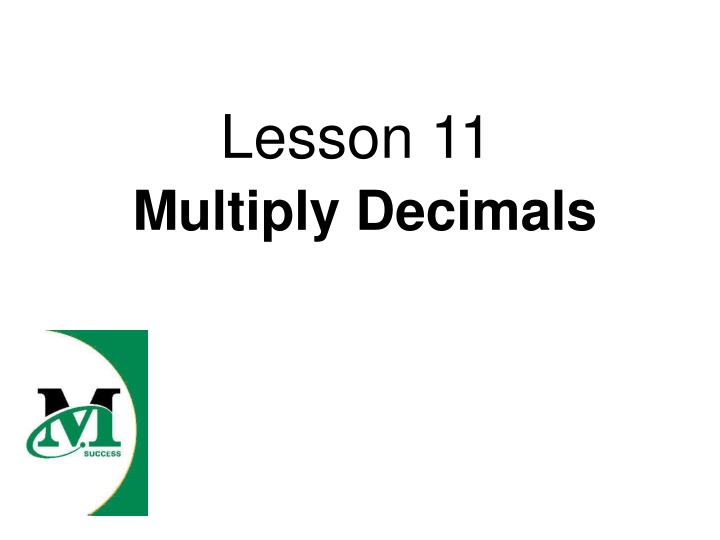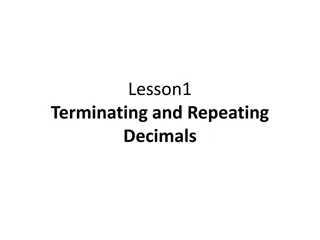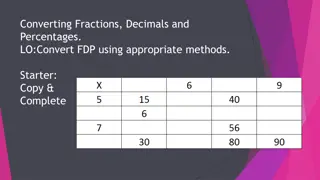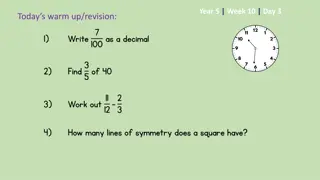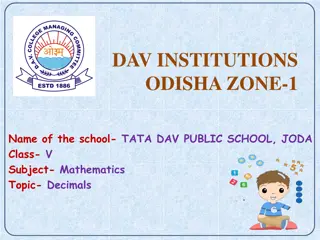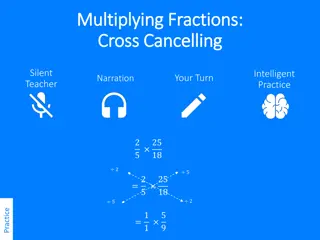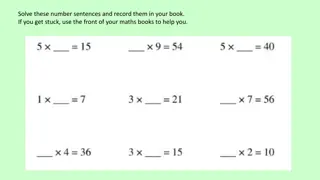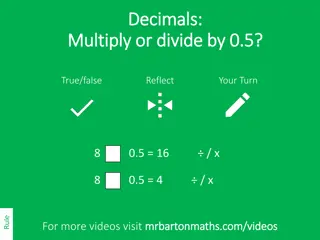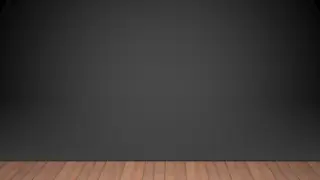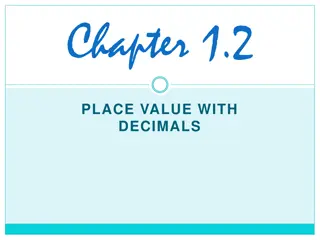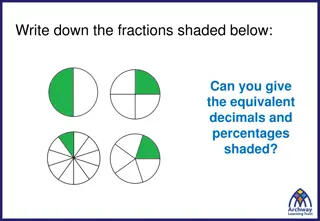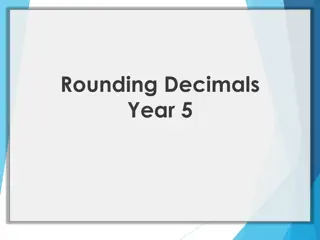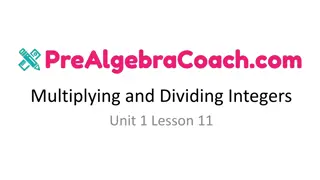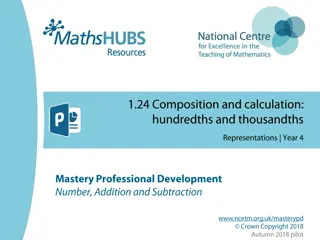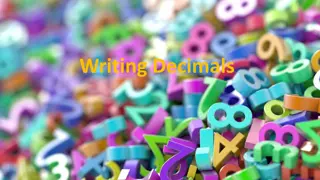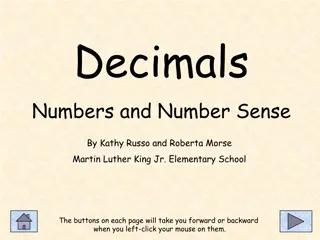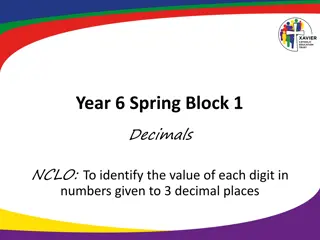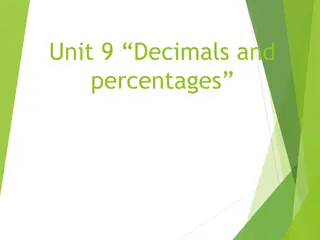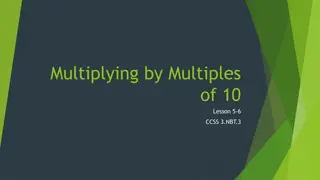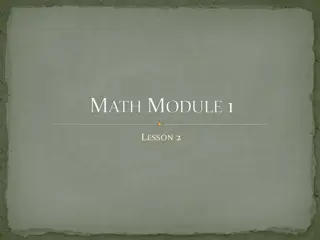Multiplying Decimals to the Hundredths Place
In this lesson, students will learn how to multiply decimals to the hundredths place using real-life scenarios and visual models. The content covers understanding decimal places, multiplying decimals by whole numbers, and calculating total costs. Various essential questions and cooperative activities enhance learning and comprehension. Students will practice multiplying decimals by decimals and recognize patterns in the placement of decimal points. The lesson aims to strengthen skills in decimal multiplication and problem-solving.
Download Presentation

Please find below an Image/Link to download the presentation.
The content on the website is provided AS IS for your information and personal use only. It may not be sold, licensed, or shared on other websites without obtaining consent from the author.If you encounter any issues during the download, it is possible that the publisher has removed the file from their server.
You are allowed to download the files provided on this website for personal or commercial use, subject to the condition that they are used lawfully. All files are the property of their respective owners.
The content on the website is provided AS IS for your information and personal use only. It may not be sold, licensed, or shared on other websites without obtaining consent from the author.
E N D
Presentation Transcript
Lesson 11 Multiply Decimals
[OBJECTIVE] The student will multiply decimals to the hundredths place.
[MYSKILLS] Multiplying whole numbers Knowledge of decimal place values to hundredths
[ESSENTIALQUESTIONS] 1. What happens to the decimal places when decimals are multiplied? 2. How is multiplying a decimal by a whole number like repeated addition? 3. How can you describe the product of two decimals less than 1?
[LESSON] SOLVE Evie is helping make costumes for the school play. The drama club is presenting a spring production in April. Mrs. Carson, the drama club advisor, asked Evie to buy 3.75 yards of ribbon for trimming some of the costumes. If the ribbon costs $4.00 per yard, what is the total cost of the ribbon? S Study the Problem Underline the question. This problem is asking me to find the total cost of the ribbon.
[Cooperative Pairs] Partner A Partner B
Multiplying a Decimal by a Decimal = + + What does each completely shaded model represent? 1 whole What does each partially shaded model represent? 2 tenths
Multiplying a Decimal by a Decimal = + + What addition problem does this model represent?1.2 + 1.2 + 1.2 = 3.6 What multiplication problem does this model represent? 3 1.2 = 3.6 What does this number sentence mean? Three groups of one whole and two tenths
Multiplying a Decimal by a Decimal = + + When multiplying a whole number by a tenth, what can you say about the position of the decimal point? Ex: 3 1.2 = 3.6 There should be one decimal place to the right of the decimal.
Multiplying a Decimal by a Decimal + How does this model differ from the last model?Both addends are decimals and are in hundredths. What does each partially shaded model represent? Thirty-two hundreds or 0.32
Multiplying a Decimal by a Decimal + What addition problem does this model represent? 0.32 + 0.32 = 0.64 What multiplication problem does this model represent? 2 0.32 = 0.64 What does this number sentence mean? Two groups of thirty-two hundredths
Multiplying a Decimal by a Decimal + When multiplying a whole number by a hundredth, what can you say about the position of the decimal point? Ex: 2 0.32 = 0.64 There should be two decimal places to the right of the decimal.
Multiplying a Decimal by a Decimal 0.3 0.5 = items 3 rows (groups) groups Identify how many groups are represented. 0.3 How do we model the 0.3 groups? Shade three rows.
Multiplying a Decimal by a Decimal 0.3 0.5 = 5 columns (items) items 3 rows (groups) groups Identify how many items are in each group. 0.5 How do we model the 0.5 items in each group? Shade five columns in each row.
Multiplying a Decimal by a Decimal 0.3 0.5 = 5 columns (items) items 3 rows (groups) groups Identify how many hundredths are in the shaded area. 0.15 Explain how this could be written as a multiplication problem. 0.3 0.5 = 0.15 0.15
Multiplying a Decimal by a Decimal 0.3 0.5 = 0.15 5 columns (items) items 3 rows (groups) groups What does this expression mean? 0.3 of a group of 0.5 items Describe the product when multiplying a tenth by a tenth. hundredths
Multiplying a Decimal by a Decimal 0.7 0.2 = 7 rows (groups) Identify how many groups are represented. 0.7 How do we model the 0.7 groups? Shade seven rows.
Multiplying a Decimal by a Decimal 0.7 0.2 = (items) 2 columns 7 rows (groups) Identify how many items are in each group. 0.2 How do we model the 0.2 items in each group? Shade two columns in each row.
Multiplying a Decimal by a Decimal 0.7 0.2 = (items) 2 columns 7 rows (groups) Identify how many hundredths are in the shaded area. 0.14 Explain how this could be written as a multiplication problem. 0.7 0.2 = 0.14 0.14
Multiplying a Decimal by a Decimal 0.7 0.2 = (items) 2 columns 0.14 7 rows (groups) What does this expression mean? 0.7 of a group of 0.2 items Describe the product when multiplying a tenth by a tenth hundredths
Multiplying a Decimal by a Decimal 0.4 0.4 = 4 rows (groups) Identify how many groups are represented. 0.4 How do we model the 0.4 groups? Shade four rows.
Multiplying a Decimal by a Decimal 0.4 0.4 = (items) 4 columns 4 rows (groups) Identify how many items are in each group. 0.4 How do we model the 0.4 items in each group? Shade four columns in each row.
Multiplying a Decimal by a Decimal 0.4 0.4 = (items) 4 columns 4 rows (groups) Identify how many hundredths are in the shaded area. 0.16 Explain how this could be written as a multiplication problem. 0.4 0.4 = 0.16 0.16
Multiplying a Decimal by a Decimal 0.4 0.4 = (items) 4 columns 0.16 4 rows (groups) What does this expression mean? 0.4 of a group of 0.4 items Describe the product when multiplying a tenth by a tenth. hundredths
Multiplying a Decimal by a Decimal 0.9 0.5 = 9 rows (groups) Identify how many groups are represented. 0.9 How do we model the 0.9 groups? Shade nine rows.
Multiplying a Decimal by a Decimal 0.9 0.5 = (items) 5 columns 9 rows (groups) Identify how many items are in each group. 0.5 How do we model the 0.5 items in each group?Shade five columns in each row.
Multiplying a Decimal by a Decimal 0.9 0.5 = (items) 5 columns 9 rows (groups) Identify how many hundredths are in the shaded area. 0.45 Explain how this could be written as a multiplication problem. 0.9 0.5 = 0.45 0.45
Multiplying a Decimal by a Decimal 0.9 0.5 = (items) 5 columns 0.45 9 rows (groups) What does this expression mean? 0.9 of a group of 0.5 items Describe the product when multiplying a tenth by a tenth? hundredths
Multiplying Decimals Using Powers of 10 1.6 1 = How many places did the decimal point move in the answer? move? Which direction did the decimal point Product Why? Multiplying any number by 1 will not change the value. Did not move 0 1.6
Multiplying Decimals Using Powers of 10 1.6 10 = How many places did the decimal point move in the answer? move? Which direction did the decimal point Product Why? Multiplying any number by 10 will have a product that is larger. 1 Right 16
Multiplying Decimals Using Powers of 10 1.6 100 = How many places did the decimal point move in the answer? move? Which direction did the decimal point Product Why? Multiplying any number by 100 will have a product that is larger. 2 Right 160
Multiplying Decimals Using Powers of 10 1.6 1000 = How many places did the decimal point move in the answer? Which direction did the decimal point move? Product Why? Multiplying any number by 1000 will have a product that is larger. 3 Right 1,600
Multiplying Decimals Using Powers of 10 1.6 0.1 = How many places did the decimal point move in the answer? Which direction did the decimal point move? Product Why? Multiplying any number by 0.1 will have a product that is smaller. 1 Left 0.16
Multiplying Decimals Using Powers of 10 0.3 0.4 = 0.12 What does the number sentence mean? 0.3 of a group of 0.4 equals 0.12 Identify the number of arrows on the left side of the equal sign. two Identify the number of arrows on the right side of the equal sign. two When multiplying tenths by tenths, you will have an answer that is in hundredths.
Multiplying Decimals Using Powers of 10 0.3 0.4 = 0.12 Describe the relationship between the decimal points. The sum of the decimal places in the factors equals the number of decimal places in the product.
Multiplying Decimals Using Powers of 10 0.3 0.4 = 0.12 What place value is indicated to the right of the decimal in the factors? tenths What happened to the place value to the right of the decimal in the product? The place value of the product is hundredths Is the decimal in the product larger or smaller than either of the two factors? Smaller Why? Because we are multiplying parts of wholes.
Multiplying Decimals Without Models 0.3 0.2 = 0.06 Multiply the numbers, but don t worry about the decimal points until the end. Rewrite the problem vertically 0.3 x 0.2 0 0 . 6
Multiplying Decimals Without Models 3 0.9 = 2.7 Multiply the numbers, but don t worry about the decimal points until the end. Rewrite the problem vertically 3 x 0.9 2 . 7
Decimals Foldable Add Subtract Decimals Multiply Decimals Decimals
Decimals Foldable Steps For Multiplying Decimals Add Subtract Decimals Decimals
SOLVE Evie is helping make costumes for the school play. The drama club is presenting a spring production in April. Mrs. Carson, the drama club advisor, asked Evie to buy 3.75 yards of ribbon for trimming some of the costumes. If the ribbon costs $4.00 per yard, what is the total cost of the ribbon? S Study the Problem Underline the question. This problem is asking me to find the total cost of the ribbon.
Evie is helping make costumes for the school play. The drama club is presenting a spring production in April. Mrs. Carson, the drama club advisor, asked Evie to buy 3.75 yards of ribbon for trimming some of the costumes. If the ribbon costs $4.00 per yard, what is the total cost of the ribbon? O Organize the Facts Identify the facts. Eliminate the unnecessary facts. List the necessary facts. Ribbon costs $4.00 per yd. Need 3.75 yards
L Line Up a Plan Choose an operation or operations. Multiplication Write in words what your plan of action will be. Multiply the cost of ribbon per yard by the yards of ribbon needed.
V Verify Your Plan with Action Estimate your answer. About $16.00 Carry out your plan. $4 3.75 = $15.00
E Examine Your Results Does your answer make sense? (compare your answer to question.) Yes, because we are looking for the total cost of the ribbon. Is your answer reasonable? (compare your answer to the estimate.) Yes, because it is close to our estimate of about $16.00.
Is your answer accurate? (check your work.) Yes. Write your answer in a complete sentence. The total cost of the ribbon is $15.00.
[ESSENTIALQUESTIONS] 1. What happens to the decimal places when decimals are multiplied? (The number of decimal places in the factors equals the number of decimal places in the product.) 2. How is multiplying decimals by a whole number like repeated addition? (It is a shorter way to add decimals.)
[ESSENTIALQUESTIONS] 3. How can you describe the product of two decimals less than 1? (The decimal value in the product is smaller than either of the two decimal factors.)
Word Wall Factor Product Decimal Point Groups Items Tenths Hundredths
Lesson 11 Multiply Decimals
